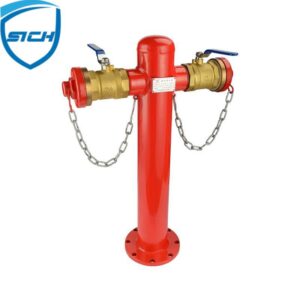Foam hydrants are specialized fire protection equipment used to dispense foam concentrate for fire suppression. There are many suppliers of foam hydrants around the world, so it’s important to research and evaluate different options to find a reputable and reliable supplier.
Here are some key factors to consider when looking for a foam hydrant supplier:
Quality: Look for a supplier that produces high-quality foam hydrants that meet industry standards and have a track record of reliability and durability. Check for certifications such as UL, FM, or EN to ensure that the hydrants meet international quality and safety standards.
Experience: Look for a supplier with experience in producing foam hydrants, and preferably one that has been in business for several years. A supplier with experience is likely to have a better understanding of the technology and the specific needs of customers.
Customization: Look for a supplier that offers customization options to meet specific needs and requirements. A good supplier should be able to provide tailored solutions to meet the unique needs of each customer, such as different flow rates, sizes, or materials.
Service and support: Look for a supplier that provides excellent after-sales service, including installation, training, and maintenance support. The supplier should have a team of experienced technicians and engineers who can provide technical assistance and troubleshooting as needed.
Price: Price is an important factor to consider, foam hydrant supplier but it should not be the only factor. Look for a supplier that offers competitive pricing without compromising on quality or service.
Some examples of foam hydrant suppliers include Angus Fire, Delta Fire, and NAFFCO. It’s important to research and evaluate different suppliers to find the one that best meets your specific needs and requirements.
Foam hydrants are typically made of materials that are durable, corrosion-resistant, and able to withstand the harsh conditions of fire protection environments.
Here are some common materials used to make foam hydrants:
Stainless steel: Stainless steel is a popular material for foam hydrants because it is corrosion-resistant and durable. It is also relatively lightweight and easy to fabricate, making it a good choice for complex shapes and designs.
Aluminum: Aluminum is another popular material for foam hydrants because it is lightweight, corrosion-resistant, and easy to fabricate. It is also relatively inexpensive compared to other materials, making it a good choice for cost-sensitive applications.
Brass: Brass is a corrosion-resistant material that is often used for the internal components of foam hydrants. It is also a good conductor of heat, which can help to dissipate heat generated during use.
Plastics: Some foam hydrants may use plastic materials, such as high-density polyethylene (HDPE), for the body of the hydrant. Plastic materials are lightweight, corrosion-resistant, and relatively inexpensive, making them a good choice for some applications.
The specific materials used to make foam hydrants may vary depending on the manufacturer and the application. It’s important to select a material that is appropriate for the specific environment and conditions in which the foam hydrant will be used, and to ensure that the material meets the necessary safety and quality standards.
